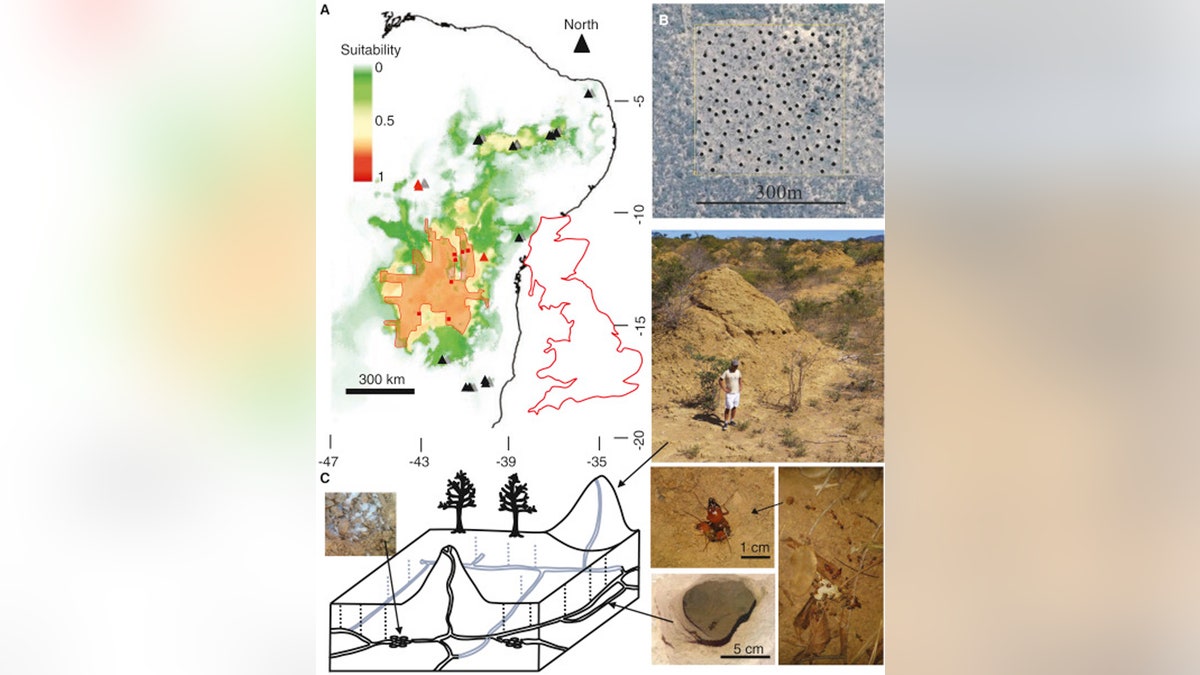Massive termite mounds seen from space
Nearly 4,000 years ago, approximately 200 million termite mounds were built in Brazil. They eventually became so enormous they could be seen from space.
Nearly 4,000 years ago, approximately 200 million termite mounds were built in Brazil — ones that eventually became so enormous they can be seen from space.
The mounds have approximately 1,800 cubic feet of soil into them. Put another way, when combined, the mounds, which are still inhabited, cover an area the size of Great Britain and the amount of soil excavated is the "equivalent to 4,000 great pyramids of Giza, and represents one of the biggest structures built by a single insect species," as Stephen Martin, of the University of Salford, explains.
"This is apparently the world's most extensive bioengineering effort by a single insect species," Roy Funch of Universidade Estadual de Feira de Santana in Brazil said in a statement. "Perhaps most exciting of all, the mounds are extremely old — up to 4,000 years, similar to the ages of the pyramids."
FIRE ANT COLONIES COULD INSPIRE ROBOT SWARMS
Each mound is approximately 8 feet tall and is about 30 feet in diameter, researchers said. They were put together over thousands of years, as the single species of termites gathered dirt to build interconnected tunnels and soil to make the mounds, all while feasting on the dead leaves from the nearby caatinga forests.

A satellite image of the termite mounds. (Credit: Roy Funch and Stephen Martin)
The research was published in the scientific journal Cell Biology.
"Soil samples collected from the centers of 11 mounds and dated using single-grain optically stimulated luminescence and the minimum age model indicated mound fill dates between 690 to 3820 years ago," the study reads. "Those ages are comparable to the world’s oldest known termite mounds in Africa."
99-MILLION-YEAR-OLD BEETLE FOUND TRAPPED IN AMBER
The researchers looked to see whether the pattern of the mounds was driven by termites in surrounding areas, but tests found little aggression at the mound level. That leads them to believe that the pattern is driven by aggressive interaction, but rather "through self-organizational processes facilitated by the increased connectivity of the tunnel network and driven by episodic leaf-fall in the dry forest."
"It's incredible that, in this day and age, you can find an 'unknown' biological wonder of this sheer size and age still existing, with the occupants still present," Martin said.
Follow Chris Ciaccia on Twitter @Chris_Ciaccia





















